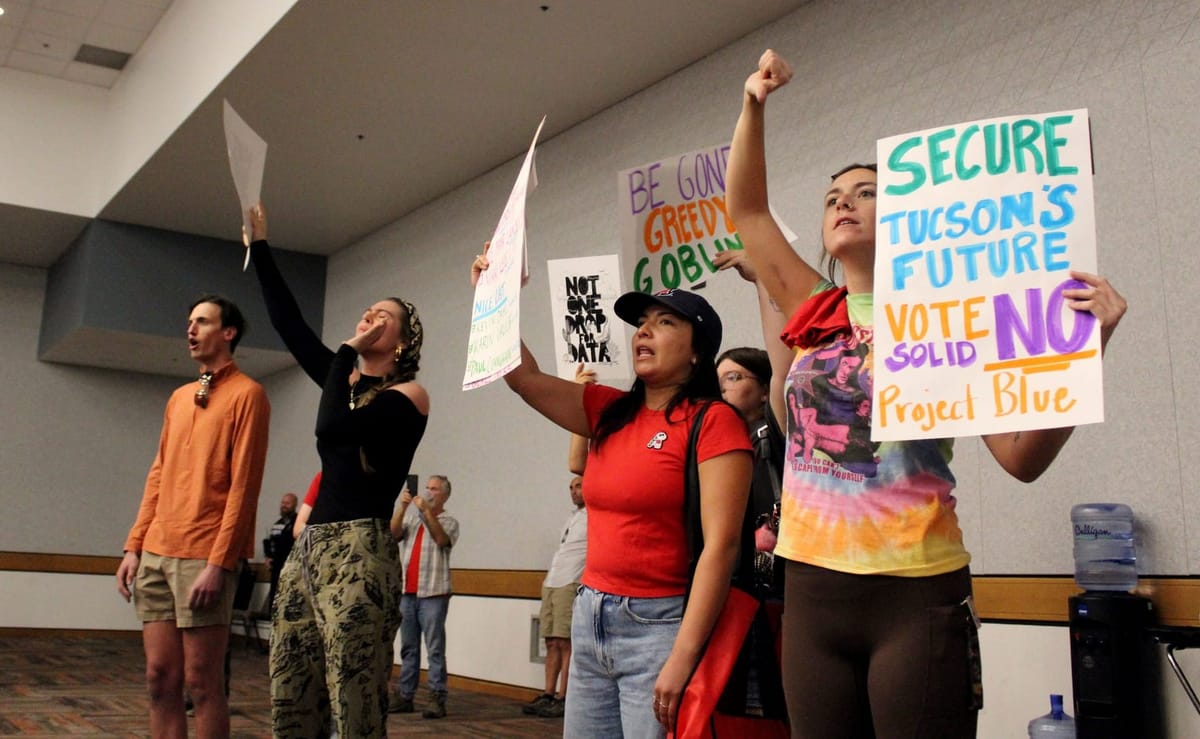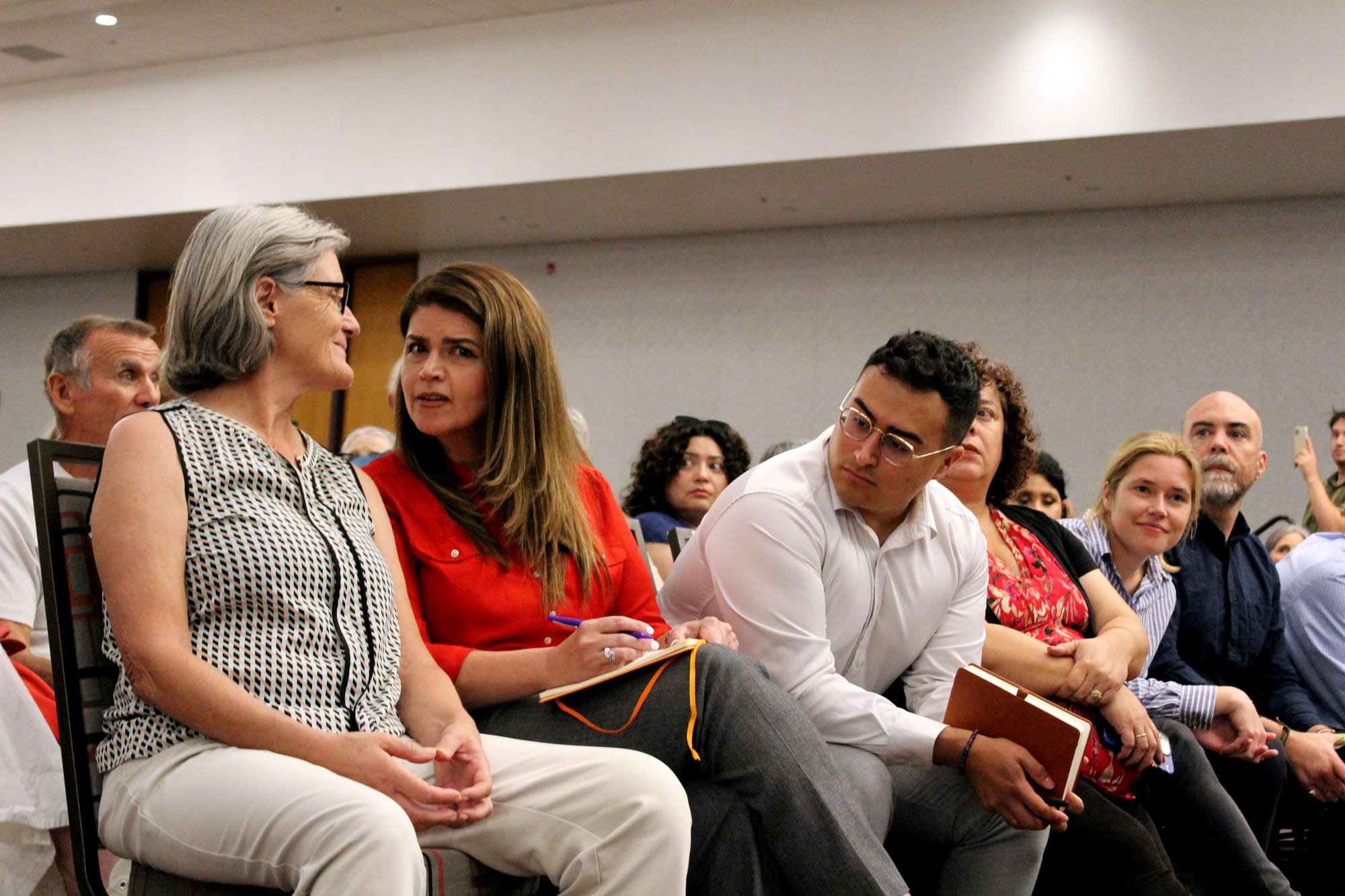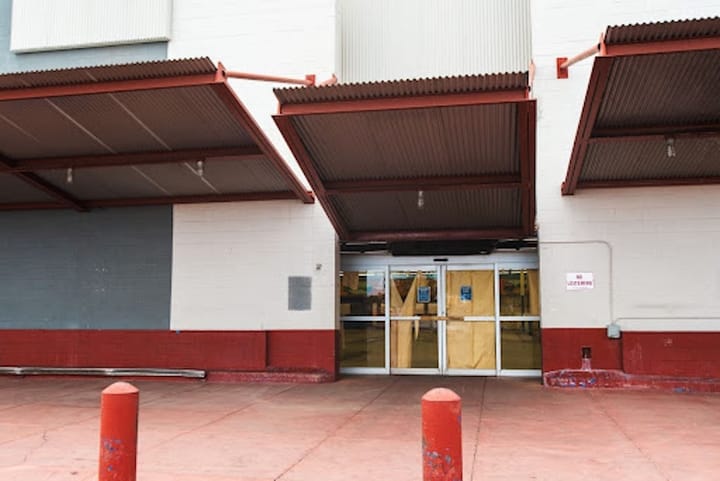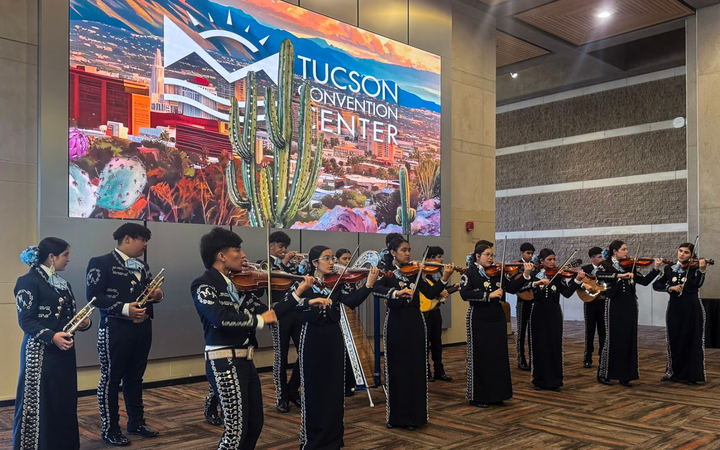Tucson activists educate public as Project Blue returns
Tucson residents are organizing a “winter school” to learn about and oppose the environmental and energy impacts of the revived Project Blue Amazon data center proposal.

With Project Blue resurfacing in Pima County, opponents are organizing a “winter school” to help Tucson residents understand how large-scale data centers affect water, energy and the desert environment.
The sessions, held weekly from November through February, are part of ongoing efforts by the No Desert Data Coalition to educate the public and mobilize community response.
Despite being rejected by the Tucson City Council in August, Project Blue has already returned with a redesigned plan for its proposed Amazon Web Services data center, this time featuring a system meant to slash water use but raising fresh concerns about energy demand.
The renewed proposal comes as the coalition continues to prepare residents for advocacy through its winter school sessions.
“The updated design, which was developed in partnership with the Pima County Board of Supervisors, incorporates air cooling technology that utilizes a closed-loop system,” Project Blue developer Beale Infrastructure said in a news release.
A closed-loop cooling system reduces water use by cooling electronics in a sealed room with a small amount of water while recirculating air, rather than relying on large volumes of water to cool servers.
The update is designed to the “highest standard of sustainable facility operations by utilizing clean energy resources,” the news release said.

While the Amazon-backed project will not have access to Tucson Water, it will be more energy-intensive, according to a statement from the No Desert Data Coalition, which uses the winter school to highlight these concerns.
“We know we can beat this data center again because the people of Tucson are more determined to stop this harmful project and protect our home than Amazon is to build it,” the statement said.
When Project Blue was first proposed, Beale Infrastructure said it could use up to 5 million gallons of water per day and rely on a potable water system for the first two years of the project.
Amazon Web Services has said it is committed to being water positive by 2030, in part by implementing integrated liquid cooling components, better known as a closed-loop cooling system, to efficiently cool its AI servers.
Amazon reported a 17% improvement in water-use effectiveness from 2023 and said it is 53% of the way toward reaching its water-positive goal, according to the report.
Beale said the project won’t deplete Tucson Water’s portfolio or supply and pledged to be “water positive,” which refers to a company replenishing more water than it consumes to restore the water cycle. As part of that commitment, the group would be charged a rate for all water used and fund other water projects within the region.
While the updated design reduces water demand, Project Blue’s initial phase could use up to 350 megawatts of power. That’s roughly enough electricity to power more than 250,000 homes at once, highlighting the project’s potential strain on Tucson’s energy grid.

Beale said the project won’t cause rate increases for other Tucson Electric Power customers and won’t affect the energy supply agreement TEP has filed with the Arizona Corporation Commission.
“This is what balanced growth looks like: welcoming new investment while protecting longtime residents; building for the future while strengthening the present,” said TEP President and CEO Susan Grey.
The Pima County Board of Supervisors voted in June to annex 290 acres of land near the Pima County Fairgrounds for the data center, but the Tucson City Council voted unanimously in August to shut down the project after significant public outcry.
After the vote, Ward 4 Councilmember Nikki Lee warned in her newsletter that Project Blue still has the possibility of returning to Pima County.
“Project Blue will be built in the Tucson metropolitan area, regardless of what the City of Tucson decides,” the newsletter said. “Within our watershed. Within the TEP service area. With potable (drinking) water availability.”
The announcement about the updated plans said the infrastructure group reevaluated alternative designs to make the AI data center more sustainable.
“Beale’s air-cooled design will otherwise consume no water, potable or otherwise, for industrial cooling,” the press release said, adding that the only water use will be for kitchen sinks, bathrooms and fire suppression.
In response to the renewed plans, the No Desert Data Coalition emphasized that its winter school will provide residents with information about the potential impacts of data centers on the community.
“There are no greenwashing tweaks Beale and Amazon can make to their plan to make a massive water- and energy-guzzling data center safe for our desert community,” the coalition said.
Arilynn Hyatt is a journalism major at the University of Arizona and Tucson Spotlight intern. Contact her at arilynndhyatt@arizona.edu.
Tucson Spotlight is a community-based newsroom that provides paid opportunities for students and rising journalists in Southern Arizona. Please consider supporting our work with a tax-deductible donation.



